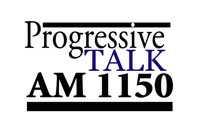Monday, April 03, 2006
The Curious Case Of The Perverted Primary
Aside from a two-year period from 2002 to 2004, Cynthia McKinney has been in Congress and outspoken about it since 1992. But her outspokenness didn't become controversial until after she led the vanguard for probes of the 2000 elections, the Barrick gold mining scheme and of the Bush Administration's pre-9/11 attitude for security. The GOP/Media Complex have no qualms over doing things like putting words she never said into her mouth. Because of this history -- and because of the race-fueled tensions within the Capitol Police -- I tend to take most any articles on her with at least one grain of salt, if not an entire shaker. I also remember the rather strange occurences in the 2002 Democratic primary in her Congressional District. Let's recap the work of several different persons who were researching this in the proto-blog era: The key is to take what is definitely known and draw very simple conclusions. The point is that voters are extremely predictable, and if one constructs a large enough pattern, one can tell what amounts to reasonable variation and what is suspicious. Kick back, crack a cold one, and here we go: 1. Total votes in 2000 general: 229,856 Democratic (McKinney) votes in 2000 general: 139,579 So, roughly 40% of active voters vote Republican. In 2004, this pattern was repeated, with the Republican getting 36% against McKinney, 89,509 to her 157,461. One can double check this by looking at district votes for Bush, but one would have to request detailed precinct information. However, one can look at the counties which are partly included in District 4 to get a flavor for it. Overall, DeKalb County voted 154,509 for Gore, 58,807 for Bush, while Gwinnett County voted 61,434 for Gore and 121,756 for Bush, so that region voted roughly 45% Bush. So, while one can argue whether the district is 30% Republican or 50% Republican, it's extremely implausible that it's, say, 5% Republican. Remember that last sentence. We're going to be coming back to that. 2. The 2002 Senate primary shows a similar pattern, with an overall 36% Republican vote in the counties of interest: Democratic vote DeKalb 96,675 Gwinnett 12,756 Republican vote: DeKalb 6,241 Gwinnett 57,266 Total Democratic: 109,431 Total Republican: 63,507 So, the Senate primary roughly follows the contours of the 2000 presidential. Turnout is roughly 40% of what it was for the 2000 presidential election. 3. 2004 Senatorial. In 2004, Majette polled 270,088 votes vs. 228,385 for the Republican in DeKalb + Gwinnett (vs. about 215,000 Gore, 180,000 Bush in 2000). So the Republican, in perfect keeping with history, polled 45%. The upshot: We've got a nice predictable pattern here for the Fourth District over the last three contests. Now check out what happened in the 2002 primary elections in that district: 4. What happened in 2002 in District 4, which includes parts of DeKalb and Gwinnett, in the primary was this: Republican primary vote: 5,594 Democratic primary vote: 117,670 McKinney vote: 49,058 Majette vote: 68,612 In this election, the ratio of people turning out to vote Republican is less than 5% of the total. This not only fails the smell test, it fails the laugh test. It's not at all consistent with the 2002 Senate vote, or with the other elections held from 2000 on. The obvious explanation is that many of the people voting in the 2002 Democratic primary were normally Republican voters. That's apparently legal in Georgia. But there have been many people looking to the most convoluted theories to avoid this simple, straightforward mathematical explanation.
More blogs about politics.






